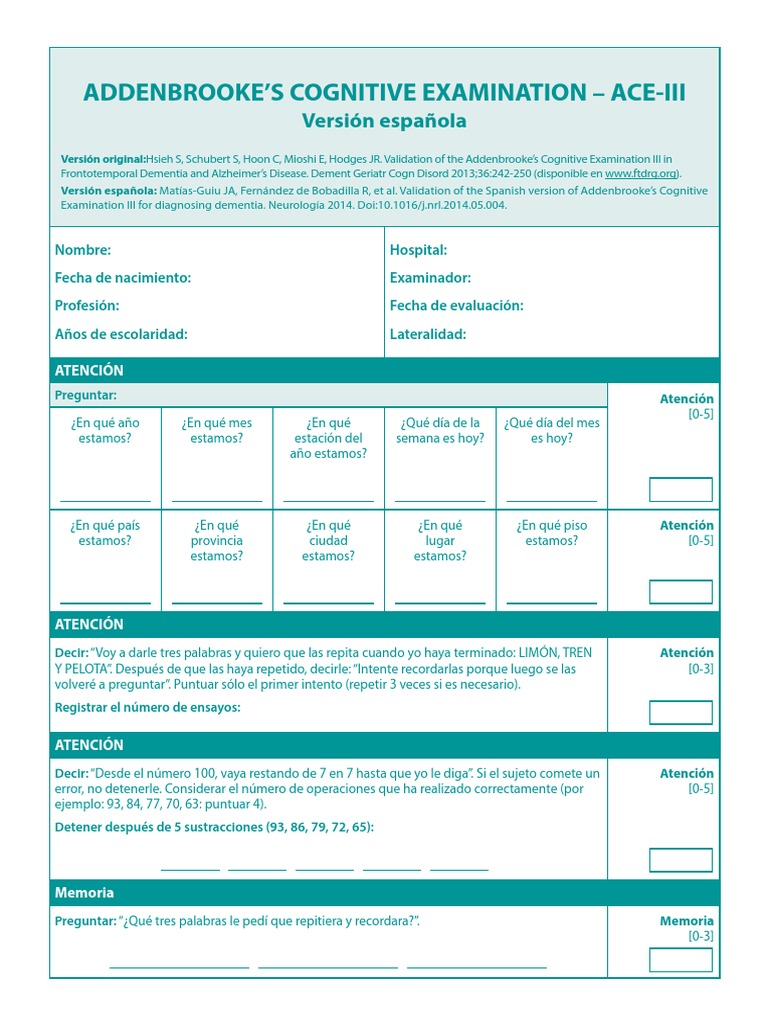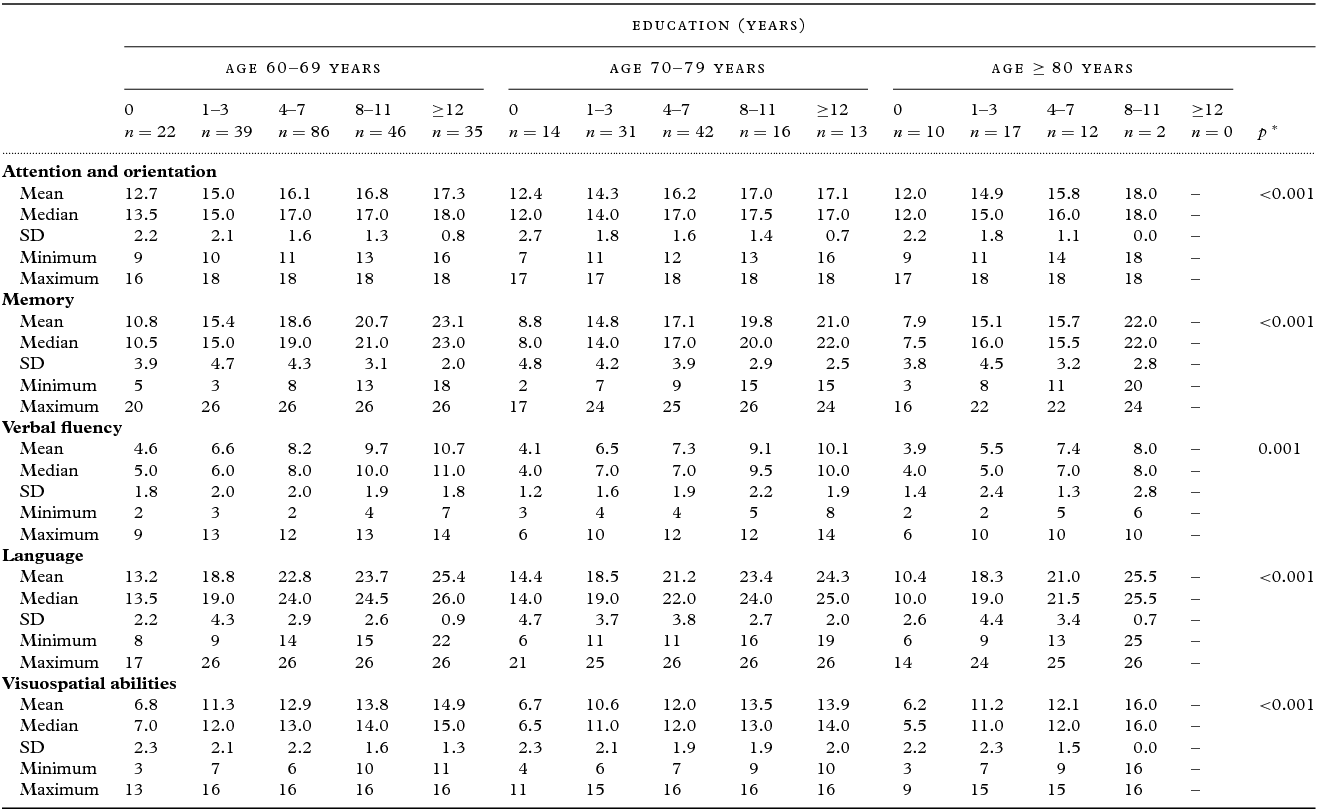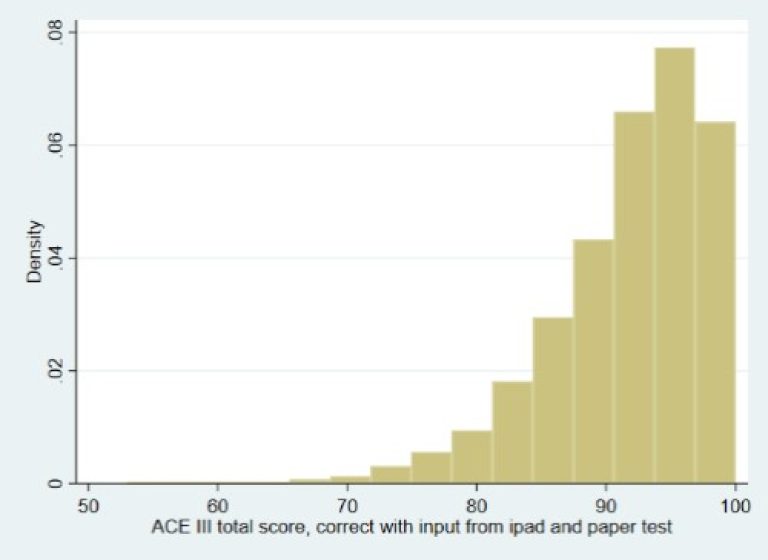Addenbrooke's Cognitive Examination Age Range
Addenbrooke's Cognitive Examination Age Range - •to identify a dementia •to detect mci / early cognitive decline. Of 100 patients seen (m:f = 51:49; To assess the diagnostic test accuracy of the ace‐iii and mini‐ace for the detection of dementia, dementia sub‐types, and mild cognitive. •cognitive screens may be administered for a range of reasons, e.g.,:
•cognitive screens may be administered for a range of reasons, e.g.,: •to identify a dementia •to detect mci / early cognitive decline. Of 100 patients seen (m:f = 51:49; To assess the diagnostic test accuracy of the ace‐iii and mini‐ace for the detection of dementia, dementia sub‐types, and mild cognitive.
•to identify a dementia •to detect mci / early cognitive decline. To assess the diagnostic test accuracy of the ace‐iii and mini‐ace for the detection of dementia, dementia sub‐types, and mild cognitive. •cognitive screens may be administered for a range of reasons, e.g.,: Of 100 patients seen (m:f = 51:49;
(PDF) Addenbrooke's cognitive examination III in the diagnosis of
Of 100 patients seen (m:f = 51:49; •to identify a dementia •to detect mci / early cognitive decline. •cognitive screens may be administered for a range of reasons, e.g.,: To assess the diagnostic test accuracy of the ace‐iii and mini‐ace for the detection of dementia, dementia sub‐types, and mild cognitive.
ACEIII Administration (UK) ADDENBROOKE’S COGNITIVE EXAMINATION ACE
•cognitive screens may be administered for a range of reasons, e.g.,: To assess the diagnostic test accuracy of the ace‐iii and mini‐ace for the detection of dementia, dementia sub‐types, and mild cognitive. Of 100 patients seen (m:f = 51:49; •to identify a dementia •to detect mci / early cognitive decline.
(PDF) Utility and Limitations of Addenbrooke’s Cognitive Examination
•cognitive screens may be administered for a range of reasons, e.g.,: Of 100 patients seen (m:f = 51:49; To assess the diagnostic test accuracy of the ace‐iii and mini‐ace for the detection of dementia, dementia sub‐types, and mild cognitive. •to identify a dementia •to detect mci / early cognitive decline.
Addenbrooke's Cognitive Examination (Ace Iii) PDF
•to identify a dementia •to detect mci / early cognitive decline. To assess the diagnostic test accuracy of the ace‐iii and mini‐ace for the detection of dementia, dementia sub‐types, and mild cognitive. Of 100 patients seen (m:f = 51:49; •cognitive screens may be administered for a range of reasons, e.g.,:
Path model for the ACEIII total score. ACEIII, Addenbrooke's
•cognitive screens may be administered for a range of reasons, e.g.,: To assess the diagnostic test accuracy of the ace‐iii and mini‐ace for the detection of dementia, dementia sub‐types, and mild cognitive. Of 100 patients seen (m:f = 51:49; •to identify a dementia •to detect mci / early cognitive decline.
Table 2 from The Edinburgh Cognitive and Behavioural ALS Screen
•to identify a dementia •to detect mci / early cognitive decline. Of 100 patients seen (m:f = 51:49; •cognitive screens may be administered for a range of reasons, e.g.,: To assess the diagnostic test accuracy of the ace‐iii and mini‐ace for the detection of dementia, dementia sub‐types, and mild cognitive.
Addenbrooke's cognitive examinationrevised normative and accuracy
•to identify a dementia •to detect mci / early cognitive decline. To assess the diagnostic test accuracy of the ace‐iii and mini‐ace for the detection of dementia, dementia sub‐types, and mild cognitive. Of 100 patients seen (m:f = 51:49; •cognitive screens may be administered for a range of reasons, e.g.,:
(PDF) The Addenbrooke s Cognitive Examination Revised Is as Effective
•to identify a dementia •to detect mci / early cognitive decline. To assess the diagnostic test accuracy of the ace‐iii and mini‐ace for the detection of dementia, dementia sub‐types, and mild cognitive. •cognitive screens may be administered for a range of reasons, e.g.,: Of 100 patients seen (m:f = 51:49;
Addenbrooke's Cognitive Examination (ACER) (1) New PDF Clinical
•to identify a dementia •to detect mci / early cognitive decline. •cognitive screens may be administered for a range of reasons, e.g.,: Of 100 patients seen (m:f = 51:49; To assess the diagnostic test accuracy of the ace‐iii and mini‐ace for the detection of dementia, dementia sub‐types, and mild cognitive.
NSHD Age 6870 Addenbrooke’s Cognitive ExaminationIII (ACEIII) Total
•to identify a dementia •to detect mci / early cognitive decline. To assess the diagnostic test accuracy of the ace‐iii and mini‐ace for the detection of dementia, dementia sub‐types, and mild cognitive. •cognitive screens may be administered for a range of reasons, e.g.,: Of 100 patients seen (m:f = 51:49;
To Assess The Diagnostic Test Accuracy Of The Ace‐Iii And Mini‐Ace For The Detection Of Dementia, Dementia Sub‐Types, And Mild Cognitive.
Of 100 patients seen (m:f = 51:49; •cognitive screens may be administered for a range of reasons, e.g.,: •to identify a dementia •to detect mci / early cognitive decline.









